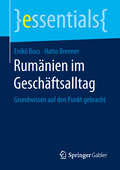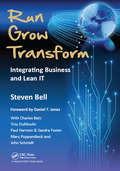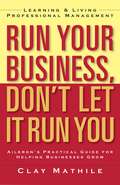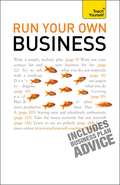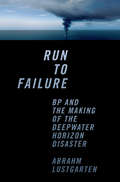- Table View
- List View
Rumie: Bringing Digital Education to the Underserved
by Amram Migdal John J-H KimIn fall of 2015, the Toronto, Canada-based education technology non-profit Rumie had distributed thousands of computer tablets preloaded with collections of thousands of pieces of curated educational content to nongovernmental organizations (NGOs) in some of the most impoverished countries around the world that lacked basic educational resources. Founder and executive director Tariq Fancy, with his team, were deciding whether to accept a large new order from an NGO in Pakistan that would require Rumie for the first time to provide ongoing services such as teacher training, performance monitoring, and other support. Some on the team felt that providing a full suite of bundled services would detract from their recent push to decouple Rumie's software and services from the physical tablets to achieve greater reach and scale. In October 2015, Rumie opened the LearnCloud, its proprietary online content curation portal for NGOs, to the public. Now anyone could discover, share, and rate free digital educational content from any source. Fancy considered, "Education Access represents a big order and huge growth, but does it lead us into doing things we haven't done before, may not be good at, and may not be scalable to be used by different partners in different geographies?"
Rumie: Bringing Digital Education to the Underserved
by Amram Migdal John J-H KimIn fall of 2015, the Toronto, Canada-based education technology non-profit Rumie had distributed thousands of computer tablets preloaded with collections of thousands of pieces of curated educational content to nongovernmental organizations (NGOs) in some of the most impoverished countries around the world that lacked basic educational resources. Founder and executive director Tariq Fancy, with his team, was deciding whether to accept a large new order from an NGO in Pakistan that would require Rumie for the first time to provide ongoing services such as teacher training, performance monitoring, and other support. Some on the team felt that providing a full suite of bundled services would detract from their recent push to decouple Rumie's software and services from the physical tablets to achieve greater reach and scale. In October 2015, Rumie opened the LearnCloud, its proprietary online content curation portal for NGOs, to the public. Now anyone could discover, share, and rate free digital educational content from any source. Fancy considered, "Education Access represents a big order and huge growth, but does it lead us into doing things we haven't done before, may not be good at, and may not be scalable to be used by different partners in different geographies?"
Rumo: Infrastructure for a Healthier Economy
by Natalie Kindred Forest L. Reinhardt Mariana Cal Ruth CostasBrazilian logistics company Rumo operated 13,500 km in railway networks, port terminals, and inland transshipment terminals, connecting major Brazilian ports to the agriculture hubs of Mato Grosso and S o Paulo state. Controlled by Cosan, Brazil's leading sugar and ethanol producer, Rumo had been through a turnaround over the last 3 years, including heavy investment in operational improvements, financial deleverage, and taking cash flow generation from a negative $278 million in 2015 to positive $15.3 million in 2018. In 2019, as the company planned its new expansion cycle ($3.4 billion would be invested from 2019 to 2023), Rumo's executives had to find the best way to continue to capture the value created, while preserving its relations with customers and other stakeholders.
Rumors and Rumor Control: A Manager's Guide to Understanding and Combatting Rumors (Routledge Communication Series)
by Allan J. KimmelThis book offers a thorough examination of rumors and proposes strategies for organizations to use in combatting rumors that occur both internally and externally. Author Allan J. Kimmel explores the rumor phenomenon and distinguishes it as a distinct form of communication. He looks at psychological and social processes underlying rumor transmission to understand the circumstances under which people invent and circulate rumors. In addition, he examines how rumors are spread--both interpersonally and through mediated processes--and offers strategies for organizations to respond to rumors when they surface and methods for preventing their occurrence. Numerous examples are provided of actual rumor cases for which managers either successfully or unsuccessfully coped, including such companies as Procter & Gamble, McDonald's, Snapple, Pepsi-Cola, and Gerber. Intended to serve as a comprehensive compendium of strategies, this book was written with two objectives in mind. The first is to shed light on the often perplexing phenomenon of rumor by integrating disparate approaches from the behavioral sciences, marketing, and communication fields. The second is to offer a blueprint for going about the formidable tasks of attempting to prevent and neutralize rumors in business contexts. With these dual goals in mind--one theoretical, the other applied--this book will be of equal interest to both academics and managers in a wide range of professional contexts. In addition, it will guide organizational and marketing managers in their efforts to combat the potentially destructive consequences of rumors.
Rumsfeld's Rules
by Donald RumsfeldThe legendary leadership guide, distilled from a lifetime of wisdom and experience in government and businessThroughout his long and distinguished career--as a naval aviator, a U. S. Congressman, a top aide to four American presidents, a high-level diplomat, a CEO of two Fortune 500 companies, and the only twice-serving Secretary of Defense in American history--Donald Rumsfeld has collected hundreds of pithy, compelling, and often humorous observations about leadership, business, and life. When President Gerald Ford ordered these aphorisms distributed to his White House staff in 1974, the collection became known as "Rumsfelds Rules. "First gathered as three-by-five cards in a shoebox and then typed up and circulated informally over the years, these eminently nonpartisan rules have amused and enlightened presidents, business executives, chiefs of staff, foreign officials, diplomats, and members of Congress. They earned praise from the Wall Street Journal as "Required reading," and from the New York Times which said: "Rumsfelds Rules can be profitably read in any organization. . . The best reading, though, are his sprightly tips on inoculating oneself against that dread White House disease, the inflated ego. "Meanwhile, the collection continued to grow as Rumsfeld added new rules derived from things he read, heard, or observed in more than eight decades of a remarkable life. Now these legendary rules are made available for the first time to corporate executive. Rumsfeld has selected his most useful and important rules for effective leadership, enhanced with fresh insights and entertaining anecdotes, and discusses them in the blunt and witty style that made his Pentagon press conferences "must-see TV. "Distilled from a career of unusual breadth and accomplishment, and organized under practical topics like hiring people, running a meeting, and dealing with the press, Rumsfelds Rules can benefit people at every stage in their careers and in every walk of life, from aspiring politicos and industrialists to recent college graduates, teachers, and business leaders. The book provides unprecedented insight into leadership, management, strategy, and life--thinking that not only helped Rumsfeld lead the Pentagon in wartime, but earned him a reputation as one of Americas toughest and most effective CEOs.
Rumänien im Geschäftsalltag
by Hatto Brenner Enikö BucsDieses essential gibt einen Einblick in den Geschäftsalltag Rumäniens für potentielle Investoren. Es zeigt Chancen auf, legt aber auch die Eigenheiten des Marktes und die damit verbundenen Herausforderungen offen. Das Autorenduo lässt sein reichhaltiges Wissen in diesen Band einfließen: Enikö Bucs kennt sowohl die teils ähnliche Mentalität ehemals kommunistisch geführter Länder sehr gut, als auch aus langjährigen Geschäftsbeziehungen die Erwartungen westeuropäischer Firmen. Hatto Brenner ist erfahrener Buchautor mit dem Schwerpunkt internationales Business Development.
Run Experiments: Leading Adaptive Change with an Experimental Mindset
by Alexander Grashow Marty Linsky Ronald HeifetzLeadership is an improvisational art. Everything you do in leading adaptive change is an experiment. Many people, however, fail to see it that way, feeling and succumbing to the enormous pressure to produce certain results from their actions. Framing everything as an experiment offers you more room to try new strategies, to ask questions, to discover what's essential, what's expendable, and what innovation can work. This chapter will help you adopt an experimental mind-set. This chapter was originally published as chapter 22 of "The Practice of Adaptive Leadership: Tools and Tactics for Changing Your Organization and the World."
Run Grow Transform: Integrating Business and Lean IT
by Steven BellToday's customers want it all and they want it now: innovation, speed, agility, and value. How can you drive operational excellence, stimulate growth, and accelerate idea-to-value innovation throughout your enterprise? Shingo Prize-winning author Steve Bell, joined by other thought leaders, offers useful insights and examples you can start using now. Run Grow Transform takes the next logical step to driving enterprise value. This could be the game-changing playbook for IT 3.0. -Mark Katz, CIO & Senior Vice President, Esselte Corporation A powerful read detailing how companies can leverage their Lean IT transformation to supercharge the business. -Tom Paider, IT Build Capability Leader, Nationwide The consistent application of the practices described in this book has enabled Embraer to reap huge gains. I recommend this book as a desktop companion. -Alexandre Baule, Vice President Information Systems, Embraer Run Grow Transform takes the reader a leap forward, ready for immediate application to bridge Lean and innovation. -Melissa Barrett, Enterprise Architecture & IT Strategy, Premera Blue Cross This book focuses on the most critical and challenging issue for any aspect of the development or use of IT: creating a collaborative learning culture. -Jeffrey K. Liker, Shingo Prize-Winning Author of The Toyota Way Run Grow Transform sets out the principles and practices necessary for success in the new economy. -Jez Humble, author of Continuous Delivery Steve Bell has hit another home run with this book. Either your organization will adopt the wisdom contained in this book and thrive, or your competitors will do so and put you out of business. -Scott Ambler, author Disciplined Agile Delivery and 19 other books It's rare to see truly new insight added to the Lean discussion. Steve Bell does just that by continuing to push the frontiers of Lean thinking. -Alexander Brown, COO, Scrum Inc. A powerful read detailing how companies can leverage their Lean IT transformation to supercharge the business. -Tom Paider, IT Build Capability Leader, Nationwide Steve Bell has mapped a new trajectory. I challenge any CIO to read Bell's breakthrough work and not be compelled to start this journey to become a transformative leader in the creation of real and sustainable value. -Jeffrey Barnes, Society for Information Management (SIM), Regional Director, Advanced Practices Council All too often the IT organization is viewed as an impediment to lean transformation, when it truly can be a catalyst. Steve's book sorts out all the noise, the jargon, and the "hero culture", guiding the reader to what is so obvious, yet so hard to see: build your culture around your customer! -Josh Rapoza, Director of Web Strategy and Operations, Lean Enterprise Institute Aligning Lean and IT is a great challenge with a big payoff. This book really shows how Lean and IT can create a strong enterprise; it's a great inspiration. -Klaus Lyck Petersen, Solar A/S A must read for any organization that is pursuing continuous improvement. In today's world, real business improvement cannot be achieved without the IT factor; this book will help any organization achieve the improvement that they are seeking. -Barry J. Brunetto, Vice President, Information Systems, Blount International Precise, concise, and entertaining, this book provides the reader with crucial tips on how IT can help enterprises survive and thrive in a fast-paced technological and economic environment. This is mandatory reading not only for businesses and IT organizations, but also for universities and policy makers. -Fuat Alican, PhD, Vice President, Central American Scientific Research and Education Center Not just for Lean Practitioners, Run Grow Transform is a must-have reference for any IT organization, regardless of size, age or industry, looking to move to the next level of performance. -Sarah Topham, Lean Deployment Leader, Information Technology & Product Management, Paychex, Inc. This is a long overdue book that addresses the key challenges for today's IT organization and puts Lean IT into
Run It Like a Business: Strategies for Arts Organizations to Increase Audiences, Remain Relevant, and Multiply Money--Without Losing the Art
by Aubrey BergauerFeatured on Publishers Weekly 2024 Announcement Issue TEDx speaker Aubrey Bergauer—&“the Steve Jobs of classical music&”—reveals how to run a successful arts business in the post-pandemic era, adapting for-profit methods for not-for-profit goals. In the US alone, the arts are a $763 billion sector whose 100,000+ organizations serve almost every community in the nation. There&’s no reason arts organizations should struggle to make ends meet. And now, with arts-tested strategies from Aubrey Bergauer, they won&’t. This foolproof guide shows how to reach new levels of engagement—while always putting art first. Running your arts organization like a business is your path forward to: Grow audiences and keep them coming back again Make our organizations more inclusive Get younger attendees in the seats and on the donor rolls Generate millions more dollars in revenue Continue to create the art we love—without the stress of figuring out how to afford it Just because arts organizations are non-profits doesn&’t mean they shouldn&’t make money; it means the money they make goes back to fund the mission—whether that&’s music, visual arts, theatre, dance, or one of many other mediums that enrich our lives. The for-profit world knows how to achieve success across customer engagement, user experience, company culture, the subscription economy, technology and media, new revenue streams, and brand relevance. Run It Like a Business provides a powerful, proven framework to help all arts organizations revitalize their economic engines and ultimately serve the arts and its patrons.
Run Past the Finish Line: How Do You Stay Focused on the Real Goal?--Transitioning from Negotiation to Implementation
by Danny Ertel Mark GordonThis chapter redefines negotiation goals as actions, relationships, and expectations that go beyond merely signing a contract.
Run Your Business Like a Fortune 100
by Rosalie LoberWHAT YOU MUST KNOW TO TURN YOUR PROFITABLE BUSINESS INTO A GREAT ONE Your business is profitable. Though you sweat every detail, it's too easy for customers and employees to slip away. Meanwhile, you're tempted by new markets and threatened by upstarts. This is the world of Rosalie Lober's Run Your Business Like a Fortune 100 where successful entrepreneurs either get big or go home. Dr. Lober reveals how your profitable small or mid-size business can get to the top and stay there. Her PROFITS principles spring from the best practices of giant corporations that invested millions of dollars and many years in their development. Dr. Lober shows how companies like yours can position themselves quickly in tumultuous markets, integrate change faster, operate without bureaucracy, and become more profitable than larger competitors. Tuned to the needs of ambitious growing companies, Run Your Business Like a Fortune 100 shows you why you have to adopt these winning principles and integrate them across your organization. "Not since Tom Peters's In Search of Excellence has there been an analysis of the best practices of companies from around the world that aspiring entrepreneurs could put to use immediately to transform their own businesses. " -Karen Rands, President, Launch Funding Network, Inc. , www. launchfn. com "Entrepreneurs, owners, and managers of businesses, regardless of annual sales, will find Dr. Lober's book filled with wisdom that works. Fortune 100 firms pay millions each year to management consultants for what Dr. Lober gives you for the price of this remarkable book!" -J. Preston Jones, DBA, Executive Associate Dean, H. Wayne Huizenga School of Business and Entrepreneurship "Intrapreneurs and entrepreneurs strive to exploit every opportunity to grow, implement the latest technology, and cut costs at the same time. These goals are usually in conflict, but Lober gives practical advice and examples of how they can all be achieved by following the Run Your Business Like a Fortune 100 blueprint. " Gerard Callaghan, Managing Director, Bank of America, and Former Managing Director, Global Finance, Citigroup
Run Your Business, Don't Let It Run You
by Clay MathileNo More 16-Hour Days! Running your own business--the American dream--can be daunting: long days, none of the freedom you envisioned, no time for family and friends, and the unrelenting pressure to keep up the pace. Worse, all this hard work can only take you so far. To get to the next level, you need to stop being "Super-Employee" and become a leader who sets direction, operationalizes goals, monitors and controls results, and involves others. You need to run your business using an integrated professional management system. Clay Mathile, who grew the Iams Company from $500K to $1 billion in sales, discusses proven management fundamentals applied in a practical way, one that has been used by thousands of business owners. You'll get real-world details that academic courses don't teach--true stories from those who, like Mathile, implemented these fundamentals and thrived. Read this book and discover how to make your business more successful and sustainable and your life more fulfilling! "Clay Mathile dives into educating entrepreneurs with the same energy he used to build a billion-dollar brand from the ground up. This is a book of lessons learned through living." --Steven Bertoni, Associate Editor, Forbes "Run Your Business, Don't Let It Run You gives you the road map for 'working on your business, not in it' and for turning your big dreams into reality. And you don't have to do it alone." --Anita Campbell, Publisher, Small Business Trends "Using Aileron's System of Professional Management, we went from 65 employees to 205 employees. As the heavy construction industry grew by less than 5 percent over the past five years, Kelchner Inc. has grown by 95 percent. This book can help you grow your business and become more profitable!" --Todd Kelchner, CEO, Kelchner, Inc.
Run Your Own Business Successfully: Flash
by Kevin DuncanThe books in this bite-sized new series contain no complicated techniques or tricky materials, making them ideal for the busy, the time-pressured or the merely curious. Run Your Own Business Successfully is a short, simple and to-the-point guide to the art of running your own business in a way that suits you. In just 96 pages, the reader will discover how to assess the pros and cons of running a business, maximise motivation and find the most effective practices.KNOW WHAT YOU HAVE TO OFFERINCREASE MOTIVATIONSORT YOUR FINANCESENJOY INDEPENDENCESTAY ENTHUSIASTIC
Run Your Own Business Successfully: Flash
by Kevin DuncanThe books in this bite-sized new series contain no complicated techniques or tricky materials, making them ideal for the busy, the time-pressured or the merely curious. Run Your Own Business Successfully is a short, simple and to-the-point guide to the art of running your own business in a way that suits you. In just 96 pages, the reader will discover how to assess the pros and cons of running a business, maximise motivation and find the most effective practices.KNOW WHAT YOU HAVE TO OFFERINCREASE MOTIVATIONSORT YOUR FINANCESENJOY INDEPENDENCESTAY ENTHUSIASTIC
Run Your Own Business: Teach Yourself (TY Business Skills)
by Kevin DuncanRunning your own business can be a daunting, challenging and sometimes stressful experience, but also one of the most rewarding. This book expertly guides you through the principles of running a successful business. Crammed with practical advice - from assessing pro's and cons, to motivating yourself and adopting effective practices, it will prove invaluable as you tackle one of the biggest adventures of your lifeNOT GOT MUCH TIME?One and five-minute introductions to key principles to get you started.AUTHOR INSIGHTSLots of instant help with common problems and quick tips for success, based on the author's many years of experience.TEST YOURSELFTests in the book and online to keep track of your progress.EXTEND YOUR KNOWLEDGEExtra online articles at www.teachyourself.com to give you a richer understanding of running your own business.FIVE THINGS TO REMEMBERQuick refreshers to help you remember the key facts.TRY THISInnovative exercises illustrate what you've learnt and how to use it.
Run Your Own Business: Teach Yourself Ebook Epub
by Kevin DuncanRunning your own business can be a daunting, challenging and sometimes stressful experience, but also one of the most rewarding. This book expertly guides you through the principles of running a successful business. Crammed with practical advice - from assessing pro's and cons, to motivating yourself and adopting effective practices, it will prove invaluable as you tackle one of the biggest adventures of your lifeNOT GOT MUCH TIME?One and five-minute introductions to key principles to get you started.AUTHOR INSIGHTSLots of instant help with common problems and quick tips for success, based on the author's many years of experience.TEST YOURSELFTests in the book and online to keep track of your progress.EXTEND YOUR KNOWLEDGEExtra online articles at www.teachyourself.com to give you a richer understanding of running your own business.FIVE THINGS TO REMEMBERQuick refreshers to help you remember the key facts.TRY THISInnovative exercises illustrate what you've learnt and how to use it.
Run Your Own Corporation
by Garrett Sutton"I've set up my corporation. Now what do I do?"All too often business owners and real estate investors are asking this question. They have formed their protective entity - be it a corporation, LLC or LP - and don't know what to do next."Run Your Own Corporation" provides the solution to this very common dilemma. Breaking down the requirements chronologically (ie the first day, first quarter, first year) the book sets forth all the tax and corporate and legal matters new business owners must comply with. Written by Rich Dad's Advisor Garrett Sutton, Esq., who also authored the companion edition "Start Your Own Corporation", the book clearly identifies what must be done to properly maintain and operate your corporation entity.From the first day, when employer identification numbers must be obtained in order to open up a bank account, to the fifth year when trademark renewals must be filed, and all the requirements in between, "Run Your Own Corporation" is a unique resource that all business owners and investors must have.Rich Dad/Poor Dad author Robert Kiyosaki states, "Run Your Own Corporation is the missing link for most entrepreneurs. They've set up their entity, but don't know the next steps. Garrett Sutton's book provides valuable information needed at the crucial start up phase of operations. It is highly recommended reading."When "Start Your Own Corporation" is combined with "Run Your Own Corporation" readers have a two book set that offers the complete corporate picture.
Run of the Red Queen: Government, Innovation, Globalization, and Economic Growth in China
by Dan Breznitz Michael MurphreeFew observers are unimpressed by the economic ambition of China or by the nation's remarkable rate of growth. But what does the future hold? This meticulously researched book closely examines the strengths and weaknesses of the Chinese economic system to discover where the nation may be headed and what the Chinese experience reveals about emerging market economies. The authors find that contrary to popular belief, cutting edge innovation is not a prerequisite for sustained economic vitality--and that China is a perfect case in point.
Run to Failure: BP and the Making of the Deepwater Horizon Disaster
by Abrahm LustgartenIt was Big Oil's nightmare moment, and the dominoes began falling years before the well was drilled. Two decades ago, British Petroleum, a venerable and storied corporation, was running out of oil reserves. Along came a new CEO of vision and vast ambition, John Browne, who pulled off one of the greatest corporate turnarounds in history. BP bought one company after another and then relentlessly fired employees and cut costs. It skipped safety procedures, pumped toxic chemicals back into the ground, and let equipment languish, even while Browne claimed a new era of environmentally sustainable business as his own. For a while the strategy worked, making BP one of the most profitable corporations in the world. Then it all began to unravel, in felony convictions for environmental crimes and in one deadly accident after another. Employees and regulators warned that BP’s problems, unfixed, were spinning out of control, that another disaster—bigger and deadlier—was inevitable. Nobody was listening. Having reported on business and the energy industry for nearly a decade, Abrahm Lustgarten uses interviews with key executives, former government investigators, and whistle-blowers along with his exclusive access to BP’s internal documents and emails to weave a spellbinding investigative narrative of hubris and greed well before the gulf oil spill.
Run to Glory and Profits: The Economic Rise of the NFL during the 1950s
by David George SurdamThe National Football League has long reigned as America&’s favorite professional sports league. In its early days, however, it was anything but a dominant sports industry, barely surviving World War II. Its rise began after the war, and the 1950s was a pivotal decade for the league. Run to Glory and Profits tells the economic story of how in one decade the NFL transformed from having a modest following in the Northeast to surpassing baseball as this country&’s most popular sport.To break from the margins of the sports landscape, pro football brought innovation, action, skill, and episodic suspense on &“any given Sunday.&” These factors in turn drove attendance and rising revenues. Team owners were quick to embrace television as a new medium to put the league in front of a national audience. Based on primary documents, David George Surdam provides an economic analysis in telling the business story behind the NFL&’s rise to popularity. Did the league&’s vaunted competitive balance in the decade result from its more generous revenue sharing and its reverse-order draft? How did the league combat rival leagues, such as the All-America Football Conference and the American Football League? Although strife between owners and players developed quickly, pro-football fans stayed loyal because the product itself remained so good.
Run to Win: Lessons in Leadership for Women Changing the World
by Stephanie Schriock Christina Reynolds&“I have long believed that women who dream big, work hard, and get back up after they get knocked down can do anything; Stephanie Schriock is one of those women. I&’m so glad her thoughtful guidance is now available for women everywhere.&”—Hillary Rodham Clinton "Stephanie Schriock leads the leaders.&”—Michelle Lujan Grisham, governor of New Mexico &“Run to Win is an antidote to anxiety and a welcome call to action. I encourage every woman (and a few good men) to dive into Run to Win and take your turn at saving the world.&”—Stacey AbramsFrom the president of EMILY's List, a playbook for women changing the world in politics, business, or any arena, with a foreword from Vice President Elect Kamala Harris. For the past thirty-five years EMILY's List has helped the campaigns of thousands of pro-choice Democratic women, but the hardest part has always been convincing more women to run. Then Donald Trump was elected, and something shifted into place. American women who were furious and frustrated were looking for a way to channel their outrage into action, united in proclaiming, "If that guy can get elected, why not me?" The day after the 2016 election, dozens of women searched out an old sign-up link buried on the EMILY's List website. By Thanksgiving, those dozens had grown to a few thousand. And that was only the beginning. By the end of 2018, there were nearly fifty thousand women signed up to run for office, with scores more signing up each day. Run to Win is for all women who are looking to lead. Organized around the steps that EMILY's List coaches its candidates through (from deciding to run through celebrating victory), this book is full of essential lessons for any woman trying to succeed in a male-dominated field. Their arena is politics but their message is universal. And Stephanie Schriock is the most qualified person to share these lessons. Not only is she a powerful figure in politics but she's also a woman who commands respect for her astounding success as president of EMILY's List and a longtime Democratic operative. Her message is uplifting and actionable, her voice is that of your best girlfriend walking you through what you need to consider as you make your plan, and her experience coaching the biggest female candidates in recent elections (including all of the female 2020 Democratic presidential candidates) makes her the de facto authority on the strategies women can employ to run, fight, and win, whatever their field or goal.
Run to Win: Vince Lombardi on Coaching and Leadership
by Donald T. PhillipsVince Lombardi, whom many believe to be the greatest football coach in the history of the sport, is both a household name and an icon. He is not only renowned in the sports world, but also in business and industry for his exceptional leadership skills. In Run to Win, acclaimed author Don Phillips examines Lombardi's famous coaching style by painting a picture of a fascinating individual, a man whose ingenious leadership helped lead his teams to nine playoff victories in a row, including wins in the first two Super Bowls. By extracting powerful lessons from a man who could both lead and inspire, Phillips gets to the heart of what made Lombardi great and shows readers what it takes to be a winner. At the same time, this groundbreaking book tells the inspiring story of Lombardi's ten-year career with the Green Bay Packers and Washington Redskins, complete with anecdotes, quotes, and Lombardi Principles that show why this legendary coach continues to be a role model for effective leadership in business today.Totally accessible and utterly fascinating, Donald T. Phillips's Run to Win empowers readers with the knowledge to succeed in business, while entertaining them with tales of a man whose ability to win under any circumstance is unsurpassed in the history of professional sports.
Run with the Bulls without Getting Trampled: The Qualities You Need to Stay Out of Harm's Way and Thrive at Work
by Tim IrwinA veteran corporate psychologist examines the seven critical factors for a successful and satisfying work life—and the six most common career derailers.In Run With the Bulls Without Getting Trampled, Tim Irwin presents the distilled essence of what makes some succeed and others derail in the workplace. Using compelling real-life stories to launch each chapter, not only is Irwin transparent with the lessons he has learned from his own experiences, but he also shares the invaluable insights and principles he has gathered from thousands of interviews with senior executives.Featuring Irwin’s seven critical success factors as well as six common career derailers, this hard-hitting but entertaining book is your guide to finding lasting fulfillment in your career. After all, you are investing so much into your job. Shouldn’t it also be investing in you?
RunKeeper
by Shikhar Ghosh Shweta BagaiThe case examines the focus of an early stage company, and how venture capital can distort a founder's view. It encompasses issues such as financing, founders' definition of success/failure, defining and pivoting a business model, organizational impact of a pivot, as well as the role of VCs and Boards in outlining company strategy. In 2008, Jason Jacobs, a fitness and technology enthusiast created RunKeeper - an iPhone app to track a runner's distance, speed, calories and route taken. In its initial years, RunKeeper was a fast growing, profitable company and did not utilize the $1.5 million it raised in its Seed and Series A rounds. As RunKeeper gained momentum, Jacobs created a grand health vision (Health Graph) that would increase the chances of securing VC funding. Heralded as the "Facebook of Fitness," RunKeeper willed itself to be the one-stop location for all important health information for consumers. Despite raising $10 million, the next few years were turbulent. RunKeeper became allergic to revenue, ramped up its burn, and tried to pursue both the running app and the Health Graph - but did neither well. At the end of the case, the company is almost out of cash, and Jacobs has exhausted his prospects for raising external capital. He needs to revert to his current investors to keep the company afloat. Jacobs' instinct suggests that refocusing the company on its core product and runner base would be the best way forward. However, the last round was raised on the promise of a big health vision. Jacobs wonders whether his current investors would fund a smaller vision and how onerous the terms would be. Would they push Jacobs to pursue a sale in an over-crowded health app market? Or would they decide that he was not the right person for the company?
RunKeeper
by Shikhar Ghosh Shweta BagaiThe case examines the focus of an early stage company, and how venture capital can distort a founder's view. It encompasses issues such as financing, founders' definition of success/failure, defining and pivoting a business model, organizational impact of a pivot, as well as the role of VCs and Boards in outlining company strategy. In 2008, Jason Jacobs, a fitness and technology enthusiast created RunKeeper - an iPhone app to track a runner's distance, speed, calories and route taken. In its initial years, RunKeeper was a fast growing, profitable company and did not utilize the $1.5 million it raised in its Seed and Series A rounds. As RunKeeper gained momentum, Jacobs created a grand health vision (Health Graph) that would increase the chances of securing VC funding. Heralded as the "Facebook of Fitness," RunKeeper willed itself to be the one-stop location for all important health information for consumers. Despite raising $10 million, the next few years were turbulent. RunKeeper became allergic to revenue, ramped up its burn, and tried to pursue both the running app and the Health Graph - but did neither well. At the end of the case, the company is almost out of cash, and Jacobs has exhausted his prospects for raising external capital. He needs to revert to his current investors to keep the company afloat. Jacobs' instinct suggests that refocusing the company on its core product and runner base would be the best way forward. However, the last round was raised on the promise of a big health vision. Jacobs wonders whether his current investors would fund a smaller vision and how onerous the terms would be. Would they push Jacobs to pursue a sale in an over-crowded health app market? Or would they decide that he was not the right person for the company?



